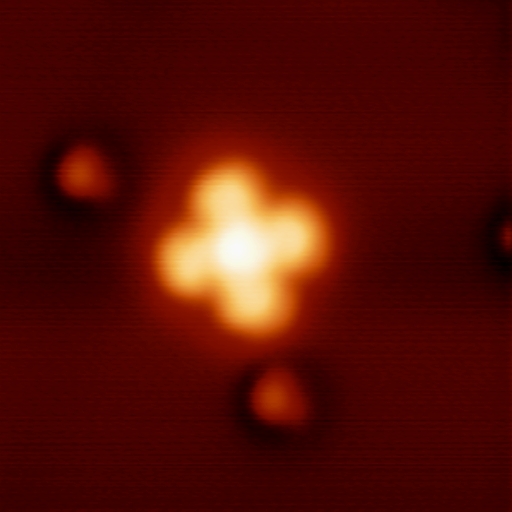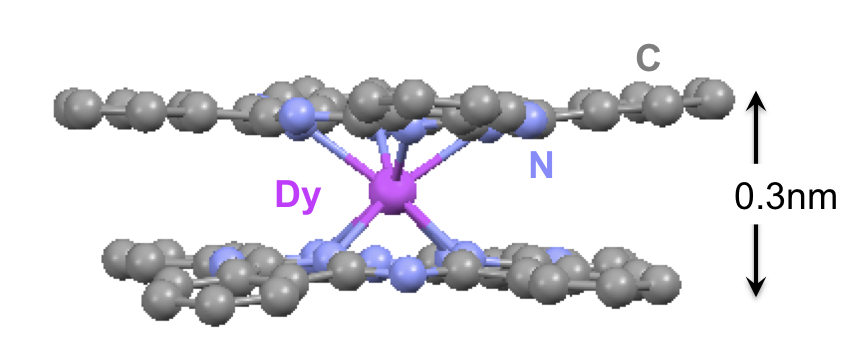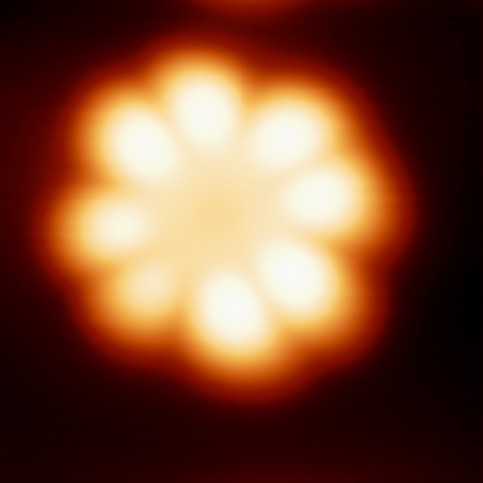



There are many different families of molecules that have very interesting magnetic properties. However, we must be able to cleanly deposit the molecules on surfaces in an ultra-clean environment (i.e. with a background pressure that is so low that the surface will not be contaminated by other molecules in the chamber) if we want to study them using scanning tunneling microscopy (STM). The standard way to deposit molecules under these conditions is to place them in a crucible and heat them up until they sublime out of the crucible and onto our sample surface. However, most magnetic molecules are very fragile and cannot survive this process without having their properties strongly modified.
One of the few molecules that is compatible with thermal sublimation and can have interesting magnetic properties is the set of phthaolcyanine, or Pc, molecules and its derivatives. These synthetic molecules were originally used as dyes, but today scientists recognize that they can do much more. Their magnetic properties can be controlled by synthesizing Pc molecules with different metal atoms in the center. In addition, it is also possible to sandwich a metal atom between two Pc molecules, producing a so-called double-decker Pc molecule.
We have studied a number of metal-doped Pc molecules with STM. Below is a summary of the ones whose images you will analyze using this app.
| Molecule | Structure | STM Image | Source |
| FePc [1] |  |
 |
Sigma-Aldrich |
| DyPc2 [2] |  |
 |
van Slageren group |
Crystal structure data for the molecules was obtained from:
[1] J.F. Kirner et al., Inorg. Chem. 15, 1685 (1976); DOI: 10.1021/ic50161a042; CIF file: FEPHCY.cif
[2] K. Katoh et al., Dalton Trans. 39, 4708 (2010); DOI: 10.1039/B926121D; CIF file: DyPc2.cif
If you want to have a look at the structure of these molecules in more detail, you can view the CIF files using a standard viewer, such as Mercury.